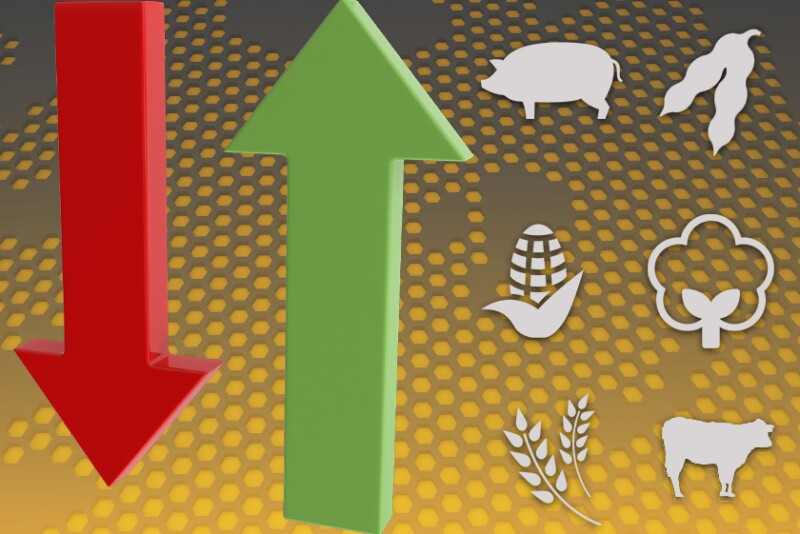GRAIN CALLS
Corn: narrowly mixed.
Soybeans: 6 to 9 cents higher.
Wheat: 5 to 8 cents higher.
GENERAL COMMENTS: Corn futures are narrowly mixed to start the week, while soybean futures are up 3 to 5 cents. Wheat futures are 5 to 8 cents higher, with SRW wheat leading gains. The U.S. dollar index is slightly higher, while equity index futures are lower. Crude oil futures are posting sizeable losses.
The normal flow of news and events will be supplemented by reports from the Pro Farmer Crop Tour this week, although our estimates for the size of the U.S. corn and soybean harvests will be published after Friday’s market close.
For the eighth consecutive business day, the USDA announced early this morning the sale of 132,000 metric tons of soybeans to an unknow destination early this morning. This is a smaller sale than those reported earlier in this string, since the preceding announcements also included similarly sized sales to China. It’s generally believed that the ‘unknown destination’ is also China. Still, the news may spark a stronger soybean opening.
Tropical Storm Fred should make landfall near Destin, Florida Monday afternoon or night. Damage to crops should be limited due to the storm’s weak intensity, reports World Weather Inc. The weather watcher reports the flux of moisture into the central U.S. could set the stage for more rain in the northern U.S. Plains and Canada’s Prairies late this week, though Tropical Depression Grace could interfere. The Midwest, Delta and central and southern U.S. Plains “will experience a good mix of weather during the next 10 days with sufficient rain to limit the expansion of dryness into the key Corn and Soybean belt production areas,” World Weather reports. It adds, “Any expansion of crop moisture stress into the Midwest from the northern Plains and far northwestern Corn Belt will be very slow and not likely to add much new potential for crop losses.”
Russian consulting firms reported an $18-$20 surge to the $286-$287 per metric ton in export wheat prices late last week. Dmitry Rylko, the head of IKAR described the situation as a “perfect storm” and said, “The most recent USDA report caused a sharp rise in international wheat values, including Russia’s.” SovEcon notes that demand from exporters and domestic consumers have climbed at a time when farmers are still slow sellers. Last week, USDA slashed its Russian wheat crop estimate by 12.5 MMT to 72.5 MMT.
Members of the National Oilseed Processors Association will likely report they crushed 159.06 million bu. of soybeans during July, which would be a modest 4.4% improvement from June’s 152.41 million bu. crush but down 7.9% from year-ago when the NOPA crush totaled 172.79 million bushels. Plant downtime along with tight supplies and high prices are expected to curb processing to a four-year low for July.
CORN: Corn futures appeared set for a bullish followthrough from a generally sideways to lower pattern after surging to the upside in the wake of last Thursday’s USDA Crop Production and Supply and Demand reports. However, bulls weren’t able to force a close above the downtrend line drawn across the June and July highs, which may allow seasonal weakness as the fall harvest looms to reassert itself. Conversely, corn will be competing with wheat and soybeans in ‘bidding for acreage’ during the coming weeks, especially with winter wheat plantings set to start in the near future.
SOYBEANS: Soybean futures ended their Sunday night session 3-5 cents higher, which obviously boded well for the reopening. On its face, the early-morning announcement of a 132,000 metric ton sale to an ‘unknown destination’ seems supportive, but one has to wonder if traders were expecting a larger figure. Last week’s news of a USDA cut to its estimate of the U.S. fall harvest was supportive, but the fact that the projected 2021-22 carry-out didn’t decline may limit the potential market upside.
WHEAT: The markets are still absorbing the changes USDA made to the U.S. and global crop sizes and their likely impact upon projected supplies. The fact that the USDA didn’t significantly reduce its estimate of the domestic spring wheat harvest may have traders thinking U.S. supplies will fall further. The market has also developed significant upward momentum and technical support in the wake of last week’s strong futures reaction to the news.
CATTLE: Steady-mixed
HOGS: Steady-mixed
CATTLE: Wholesale beef prices continued their recent surge through last Friday, with choice cutout ending the week by jumping $6.90 to $324.83 per hundredweight. That certainly suggests packer demand for fed cattle remains extremely robust. Feedlot supplies of fed cattle aren’t exactly swamping the market either. However, last week’s five-market average for direct sales actually declined from $123.69 to $122.84, thereby showing producers again seem to be missing out on soaring wholesale values just as they did last spring.
HOGS: As expected, hog slaughter surged last week, with the weekly total at 2.415 million head topping the week prior level by 96,000. The industry expects more of the same during the coming weeks and months, which usually adds up to seasonal pressure on hog and pork prices. Nevertheless, strong demand had powered a major jump in wholesale pork prices at noon Friday. Unfortunately for bullish interests, the size of that rise had diminished by the weekly close, with cutout rising ‘just’ $6.98 to $124.55. Bulls can take considerable consolation from the fact that scarce ham storage played a huge role in that rise, since sustained ham strength is likely to be a mainstay of the wholesale markets during the coming weeks.

